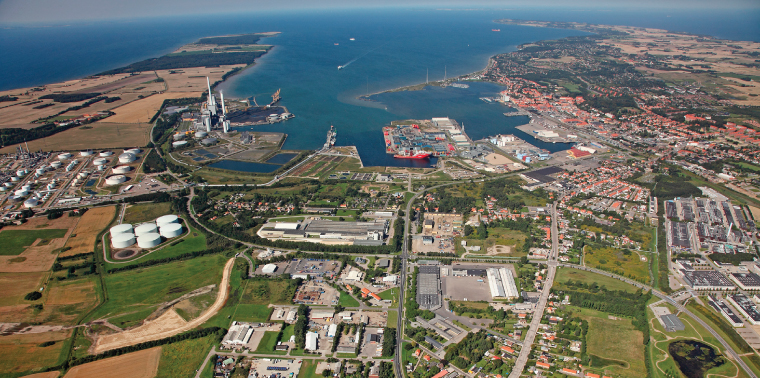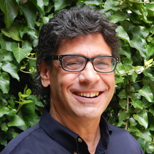July 21, 2014 — When we look closely at systems in nature — coral reefs or rainforests, for instance — we see something we don’t often see in human systems: mutually beneficial relationships and energy flows among the various elements, such as air, water, rocks, soil, and plant and animal life. If we emulate these relationships in our cities and in our industrial infrastructure, we can vastly improve the sustainability of natural resources and energy use.
That’s exactly what the municipality of Kalundborg, 64 miles west of Copenhagen, is doing. In fact, for over 50 years, Kalundborg has been home to the first — and still the most advanced — example of this concept: the Kalundborg Symbiosis. Anchored originally by a power and district heating plant, this innovative industrial complex has grown to include some large and profitable enterprises, including the biggest oil refinery in the Baltic Region; an insulin-producing plant with 2,700 employees; factories making enzymes for use in everything from bioenergy to textiles, and gypsum for lightweight building materials; and the largest sewage treatment plant in northern Europe. Heat, water and a host of other resources that would otherwise be treated as waste supply some of the energy and many of the feedstocks to these operations and to the surrounding municipality, including farms.
Throughout the site, inputs and outputs weave together like strands of thread, creating a tapestry of efficiency.“To some visitors, it can be a little confusing here because it’s old and new, private houses and industrial area,” says Lisbeth Randers, a project officer with the Symbiosis Center, the complex’s outreach arm. “The way it works in Denmark is that residential and industrial have to find a way to live and work next to each other. If the industries were polluting a lot, there would be many complaints and penalties. But environmental protection is so good in Denmark, we don’t have that.”
The heart of the industrial complex at Kalundborg occupies 4 square kilometers, nearly 1,000 acres. Throughout the site, inputs and outputs weave together like strands of thread, creating a tapestry of efficiency. The DONG Energy power plant, for instance, provides not only electricity to the grid but steam to four industrial plants, as well as heat to the local municipality and to a fish farm. In return it receives water from a refinery and the municipality, and gas from the refinery. It also sends its fly ash for processing by the cement industry and its gypsum to be made into building materials.
The energy company has a biomass gasification plant and a project that converts municipal solid waste to biofuel, recyclables and refuse-derived fuel. Working with partners, it’s advancing the “Kalundborg Integrated Energy Concept,” or KINEC, which aims to substitute biomass for coal at the Kalundborg power station. Straw — 30,000 tons of it per year — comes from the local farmers as a major feedstock for ethanol, which then goes to the power plant. Meanwhile, yeast slurry goes from the insulin plant to the nearby farms, where it is used as pig feed.
Another initiative moving forward is Cluster Biofuels Denmark, an advanced research project using algae for removing and incorporating nitrogen, phosphorus and carbon from industrial wastewater, and as part of a process to create oils, enzymes and pigments for commercial use.
With support from the central and municipal governments and the European Union, along with the companies, Kalundborg has attracted the attention of business people and investors, policy makers and students from all over the world “In 2006, 85 percent of our production was coming from, you can call it ‘black’ fossil fuels, the rest from green sources,” says Niels Christian Kjær, a top executive at DONG Energy and past president of the Kalundborg Symbiosis. “By 2040, we will switch that number: 85 percent will be green energy.”
With support from the central and municipal governments and the European Union, along with the companies, Kalundborg has attracted the attention of business people and investors, policy makers and students from all over the world who come to learn how they can create their own industrial symbiosis. In 2014 alone, it’s had visitors from Turkey, Thailand, Finland, Sweden, Kenya and Denmark, representing a farmers’ association, a development agency, an industrial think tank, an environmental institute, a waste management company, and several universities and high schools.
“What is excellent about Kalundborg is that the town hall has full focus in this,” says Kjær. “They want to be the leading town, number one in innovation. They want to have people come from all over the world to learn and say, ‘Wow.’” ![]()
UPDATED 12.22/14: New wording clarifies the planned change from coal to biomass at the Kalundborg power station.
Ensia shares solutions-focused stories free of charge through our online magazine and partner media. That means audiences around the world have ready access to stories that can — and do — help them shape a better future. If you value our work, please show your support today.
Yes, I'll support Ensia!

My business is involved with ag-enviro issues and in the process uncovered a new economic principle I refer to as "symbiotic demand". Here is a visual explanation https://prezi.com/tpfaewgz1jie/symbiotic-demand-an-economic-means-to-apportion-ecological-values/
Symbiotic demand is a fascinating concept. Interesting presentation. It is clear from the Kalundborg experience that farmers can play an integral role in this sort of industrial/agricultural "ecosystem," especially with the advent of better tech for cellulosic ethanol production and gasification of biomass.
Bill